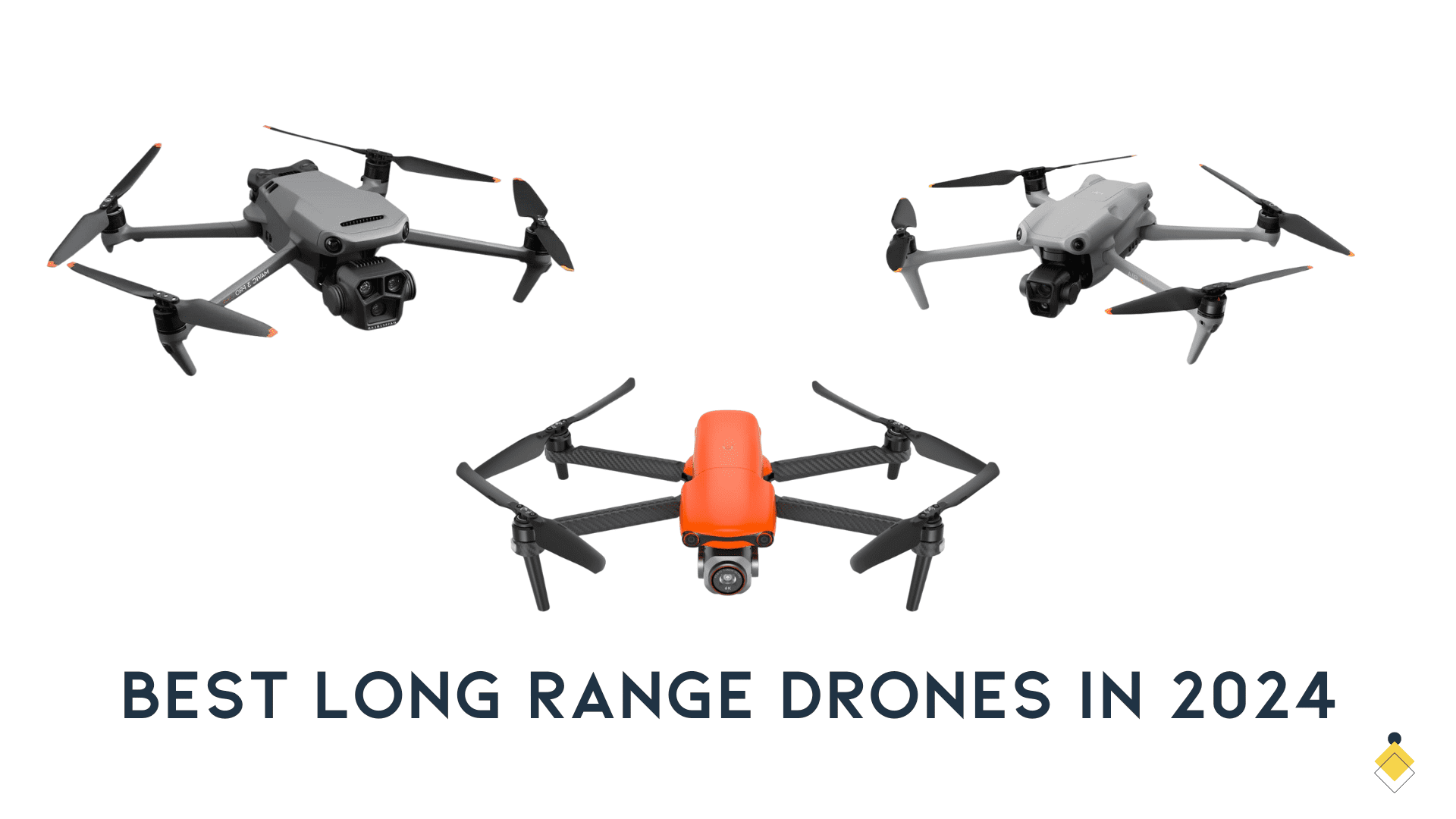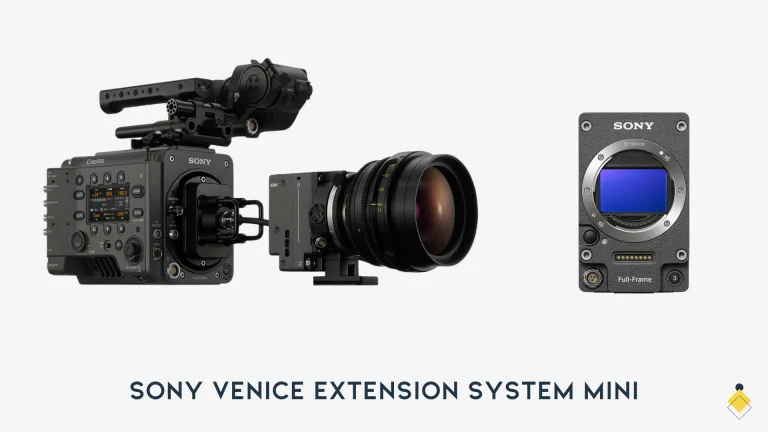Deciding on the right long-range drone can be tricky with all the options out there. The DJI Mavic 3 Pro, a top pick for many enthusiasts, offers a massive range of 28 km and superb camera quality.
Our guide will walk you through the key features and considerations to find your perfect high-flying companion. Get ready for takeoff as we explore the best in aerial tech!
How to Choose a Long-Range Drone
When choosing a long-range drone, it’s important to pay attention to video transmission, battery performance, camera capabilities, intelligent functions and safety features during flight.
These factors will ensure you get the best experience with your long-range drone.
Paying attention to video transmission
Clear video transmission is a game-changer for both casual fliers and professional aerial photographers. High-quality video feeds allow drone operators to see exactly what the drone’s camera sees in real-time, making precise navigation and image capture possible even at long distances.
Advanced drones utilize directional antennas and high-gain technology to enhance signal strength and minimize interference. The DJI Air 3 boasts stable HD footage over distances up to 20km, ensuring you can fly farther without losing sight of your visual feed.
Solid video links are essential for tasks like infrastructure inspection or precision agriculture where every detail matters. Dual-camera systems on drones like the Autel EVO Pro 2 V3 give users a reliable connection up to 15km away through dual-band transmission.
This robust communication system ensures that even when operating beyond visual line of sight (BVLOS), pilots maintain control and situational awareness with clear imagery from the drone’s aerial cameras.Next, consider how battery performance will impact your long-distance flights.
Importance of battery performance
Battery performance stands at the heart of long-range drone efficiency. It determines not just how far your drone can travel, but also its flight duration and overall control range.
For professional tasks like mapping or surveillance, a robust battery capacity means completing missions without the hassle of frequent recharging stops. Efficient batteries empower drones to soar through high winds and carry heavier payloads without sacrificing flight time.
Having a drone with top-notch battery life is essential for aerial photographers looking to capture that perfect shot from the skies. With an enduring battery, creative possibilities expand, allowing longer sessions for filming or photographing expansive landscapes.
Drones designed for endurance can fly further to document remote areas while conserving energy effectively—making them indispensable tools in various commercial and personal applications where reliability in sustained flight is key.
Checking out camera performance
When you’re in the market for a long-range drone, camera quality is key for capturing stunning aerial photography. Look for drones with high-resolution cameras that offer clear images and video recording capabilities.
The DJI Mavic 3 Pro, for instance, shoots exceptional 4K video and provides detailed footage from the sky. Drone enthusiasts should not overlook features like zoom lenses, which allow for closer shots without moving the drone itself.
Camera performance isn’t just about megapixels; it’s also about stability and control. Advanced gimbals help keep your shots steady while in flight—even when conditions aren’t ideal.
Dual cameras can add depth to your videos with different focal lengths or shoot in various modes such as slow motion or night mode to enhance creative possibilities. Always ensure that obstacle avoidance systems are present to protect your gear during complex maneuvers so you can focus on framing the perfect shot without worry.
Considering intelligent functions and modes
With a top-notch camera secured, it’s crucial to look at the intelligent functions and modes that make flying a long-range drone both enjoyable and efficient. Smart features like “Return to Home” ensure your drone finds its way back if you lose control or the battery runs low, offering peace of mind during expansive flights.
Drones equipped with autonomous flight capabilities can navigate complex routes, avoiding obstacles using sensors and GPS technology. Engaging these advanced modes streamlines operations whether you’re capturing breathtaking aerial shots or conducting environmental monitoring.
Intelligent functions don’t just simplify piloting; they amplify your creative potential. A drone might have Follow Me mode, Waypoint navigation, or subject tracking which can be perfect for dynamic video shoots requiring steady focus on moving subjects.
These smart modes also contribute to safety by facilitating smoother takeoff and landing sequences even in challenging terrains such as those navigated by the rugged Autel Evo 2 Pro Drone with its 6K video capacity.
Choosing a long range drone with diverse intelligent features enhances both the user experience and the quality of footage captured from high above.
Safety during flight
Ensuring safety during flight is crucial for long-range drone operations. It is essential to maintain a reasonable visual line of sight while flying the drone, as recommended for safe and responsible operation.
Additionally, using visual observers can help extend the range of the drone while staying compliant with FAA regulations in the United States. Prioritizing safety not only enhances operational efficiency but also minimizes potential risks associated with long-range drone flights.
When flying long-range drones, it is important to always adhere to responsible visual line-of-sight operation guidelines, making sure to prioritize safety above all else. This includes taking necessary precautions such as utilizing visual observers and maintaining a reasonable visual line of sight at all times during flight.
Legal Limitations for Flying Long Range Drones
Drones must adhere to strict legal limitations when flying long range. In the USA, drones weighing under 55 pounds are regulated by 14 CFR Part 107, known as the Small UAS Rule, with specific guidelines for recreational flights.
Additionally, recreational flyers in the USA are required to take The Recreational UAS Safety Test (TRUST) and carry proof of registration. In Canada and Australia, there are similar regulations that require drones to be flown within visual line of sight and comply with specific altitude restrictions.
Furthermore, both countries impose additional rules such as not flying over bystanders, public events, or near airports and heliports.
In summary:
- Drones in the USA are regulated by 14 CFR Part 107 for recreational flights.
- TRUST is mandatory for recreational flyers in the USA.
- Canada and Australia have similar regulations regarding flight visibility and altitude restrictions.
- Both Canada and Australia prohibit drone use over certain areas such as public events or near airports and heliports.
Types of Long Range Drones
From fixed wing to multirotor, long range drones come in various types suited for different purposes. Understanding the differences and advantages of each type will help you choose the best one for your needs.
Fixed Wing Long Range Drones
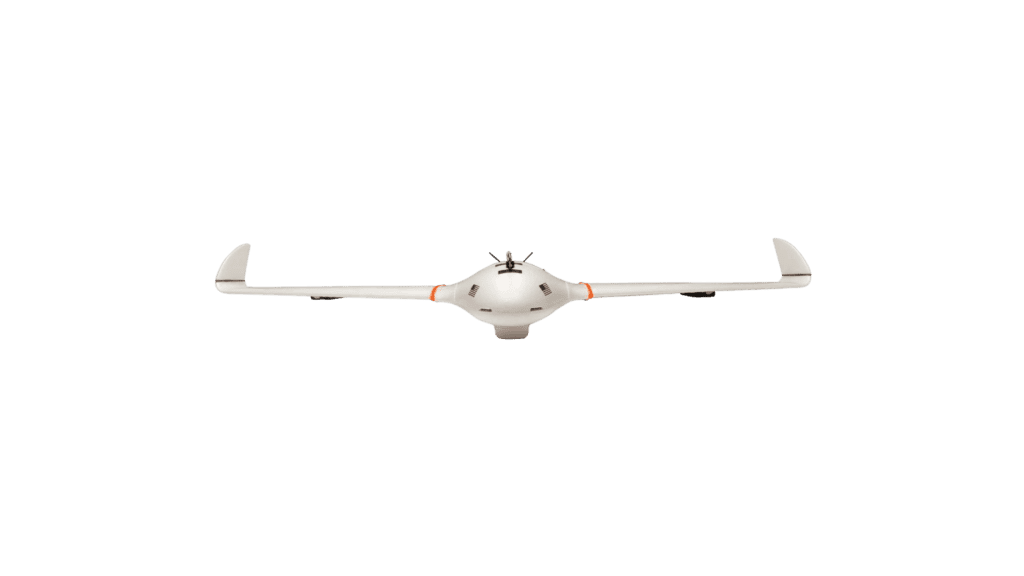
Fixed-wing long-range drones are popular for their extended flight time, making them ideal for covering large areas in a single mission. Their aerodynamic design allows them to achieve greater efficiency and longer flight ranges compared to multirotor drones.
With the ability to stay airborne for extended periods, fixed-wing drones are frequently used for tasks such as agricultural surveys, mapping missions, and environmental monitoring.
Due to their forward motion during flight rather than stationary hovering, fixed-wing drones typically consume less power, resulting in longer operational durations.
MultiRotor or Quad Copter Long Range Drones

Multirotor or quadcopter long-range drones, like the DJI Air 3, are popular for their stability and agility in flight. These drones typically offer stable HD video transmission with a range of up to 20km (12.4 miles) and provide extended flight times for capturing footage over longer distances.
The dual-camera setup on these drones allows for versatile shooting options while maintaining a compact and foldable design for easy portability.
The Autel EVO Pro 2 V3 is another notable multirotor long-range drone that boasts a range of 15km (9.3 miles) and features dual-band transmission, ensuring a reliable video feed over extended distances.
Long Range VTOL (Vertical Takeoff and Landing) Drones

Long Range VTOL (Vertical Takeoff and Landing) drones, such as the DJI Mavic 3 Pro and Autel Evo 2, provide exceptional versatility for various mission types. These drones offer the convenience of taking off and landing vertically without requiring a runway or extensive space, making them ideal for confined areas or when precision is essential.
Equipped with advanced flight control systems, these drones are capable of transitioning seamlessly between vertical takeoff and forward flight modes, allowing for efficient operation in diverse environments.
Additionally, their extended range capabilities enable them to cover vast distances while maintaining stable flight performance.
The integration of VTOL technology allows long-range drones to access remote or inaccessible locations more effectively than conventional fixed-wing aircraft or multirotor drones. This capability proves invaluable for applications such as infrastructure inspection, environmental monitoring, search and rescue operations, and aerial surveying.
Long Range Helicopter Drones
Long range helicopter drones are known for their versatility and stability in flight. These drones are equipped with advanced technology, including high-quality cameras, long battery life, and intelligent flight modes.
The DJI Mavic 3 Pro is a popular choice in this category due to its impressive flight range and video transmission capabilities, making it suitable for various commercial applications such as aerial photography and surveillance.
Autel Evo 2 Pro drone is another top contender in the long-range helicopter drone category, offering exceptional performance in rugged terrains. With a flight range of up to 15km or 9.3 miles and features like a variable aperture lens and 6K video capabilities, it’s well-suited for professional use in challenging environments.
Long Range Mini Drones
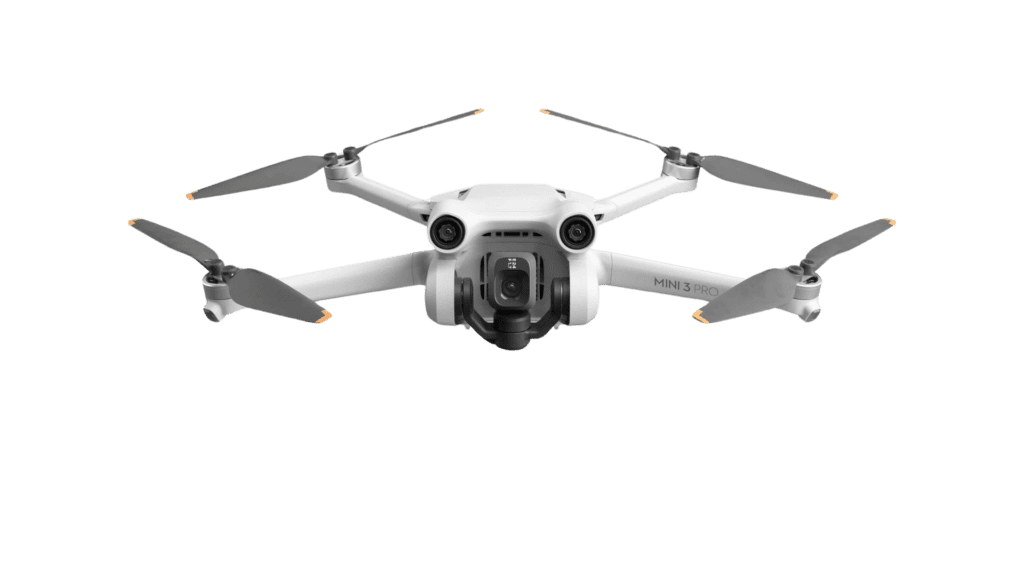
Long range mini drones offer impressive capabilities in a compact and portable design. The DJI Mini 3 Pro boasts an outstanding flight range of 12km and can capture stunning 4K video at 30fps, making it ideal for capturing breathtaking aerial footage.
Similarly, the FIMI X8SE possesses a commendable range of 10km and can stay airborne for up to 35 minutes on a single charge, equipped with a powerful 48-megapixel sensor to deliver exceptional image quality.
In addition to their remarkable flight ranges, these mini drones provide users with an excellent combination of portability and advanced features, making them suitable choices for both recreational photography enthusiasts and professional drone pilots seeking high-performance capabilities in a smaller form factor.
DJI Mavic 3 Pro: Best All-Round Long Range Drone
The DJI Mavic 3 Pro is known for its exceptional camera performance and battery life, making it the best all-round long range drone on the market. With advanced features and intelligent functions, it’s a top choice for professional photographers and videographers.

Features & Description
The DJI Mavic 3 Pro boasts an impressive maximum travel distance of 28km, providing extensive coverage for aerial photography and videography. With a professional-grade Hasselblad camera featuring a 4/3 CMOS sensor, this drone captures outstanding details with its dynamic range of 12.8 stops.

Additionally, the adjustable aperture ranging from f/2.8 to f/11 enables versatility in various lighting conditions, while the large 2.4μm pixels and f/1.7 aperture ratio ensure exceptional image quality even in low-light environments.
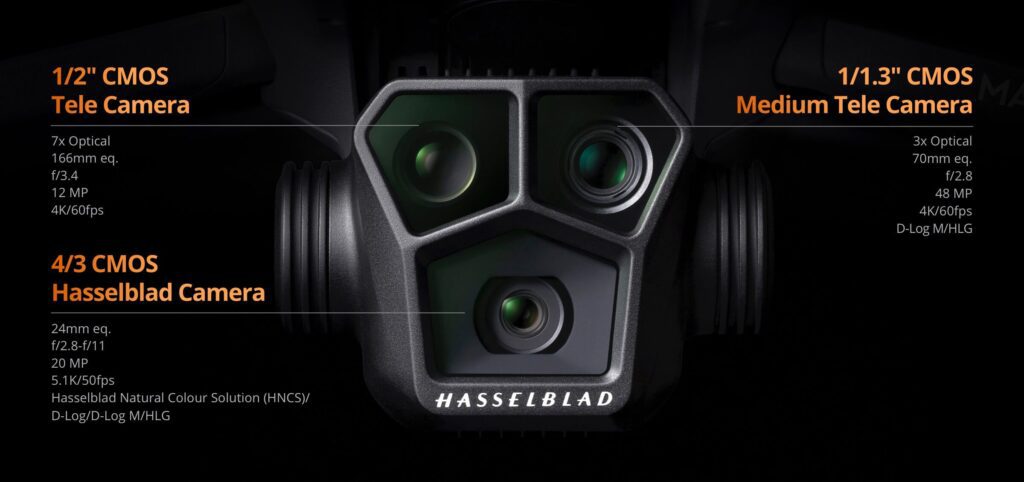
Equipped with advanced battery technology and efficiency, the Mavic 3 Pro offers a remarkable flight time of up to 43 minutes, allowing extended aerial exploration and filming sessions without frequent interruptions for recharging.
Pros & Cons
When discussing the merits and drawbacks of the DJI Mavic 3 Pro as a long-range drone, it’s critical to consider its range, flight time, and camera quality among other features. With its maximum range of 28 km or 17.3 miles and a flight time of approximately 43 minutes, this drone is a powerhouse in terms of performance and capabilities.
| Pros | Cons |
|---|---|
| Impressive range of up to 28 km or 17.3 miles enables extensive exploration and coverage. | High cost may be a barrier for hobbyists and budget-conscious users. |
| Flight time of around 43 minutes allows for prolonged aerial shooting and fewer interruptions for battery swaps. | Heavier weight compared to mini drones makes portability a slight issue. |
| Offers cutting-edge camera technology for professional grade photography and videography. | Requires thorough knowledge and handling experience due to its advanced features. |
| Advanced flight modes and capabilities enhance the user experience and safety. | Additional accessories needed for full experience may increase the overall investment. |
| Equipped with sophisticated obstacle avoidance systems to ensure flight safety. | Complexity of features might overwhelm beginners. |
| Strong wind resistance due to sturdy build quality. | Larger size when unfolded isn’t as discreet for covert operations. |
| Omnidirectional sensing helps in navigating tricky environments. | Repair costs can be high if the drone is damaged. |
Long-range drones like the DJI Mavic 3 Pro are designed to push the boundaries of aerial photography and exploration. While it offers advanced capabilities, potential buyers must weigh these against the investment and skill required to operate such a sophisticated piece of technology.
Autel Evo 2 Pro drone: Best for Rugged Terrain
The Autel Evo 2 Pro drone is designed to withstand rugged terrain and harsh conditions, making it the best choice for outdoor adventure enthusiasts and professional filmmakers looking to capture stunning footage in challenging environments.

With its advanced features and durable build, this drone is built to handle whatever nature throws at it.
Features & Description
The Autel Evo 2 Pro drone is designed for rugged terrain and professional use, making it suitable for capturing high-quality images and videos in challenging environments. Integrated with Pix4D capture technology, this drone offers detailed mapping capabilities, ideal for professionals in surveying and inspection fields.

With an impressive one-way range of 27km for long-distance flights, the Evo 2 Pro provides extended coverage for various aerial tasks. Equipped with a 1-inch CMOS sensor boasting an exceptional 50MP resolution, this drone meets the demands of professional aerial cinematographers by delivering stunning image quality.
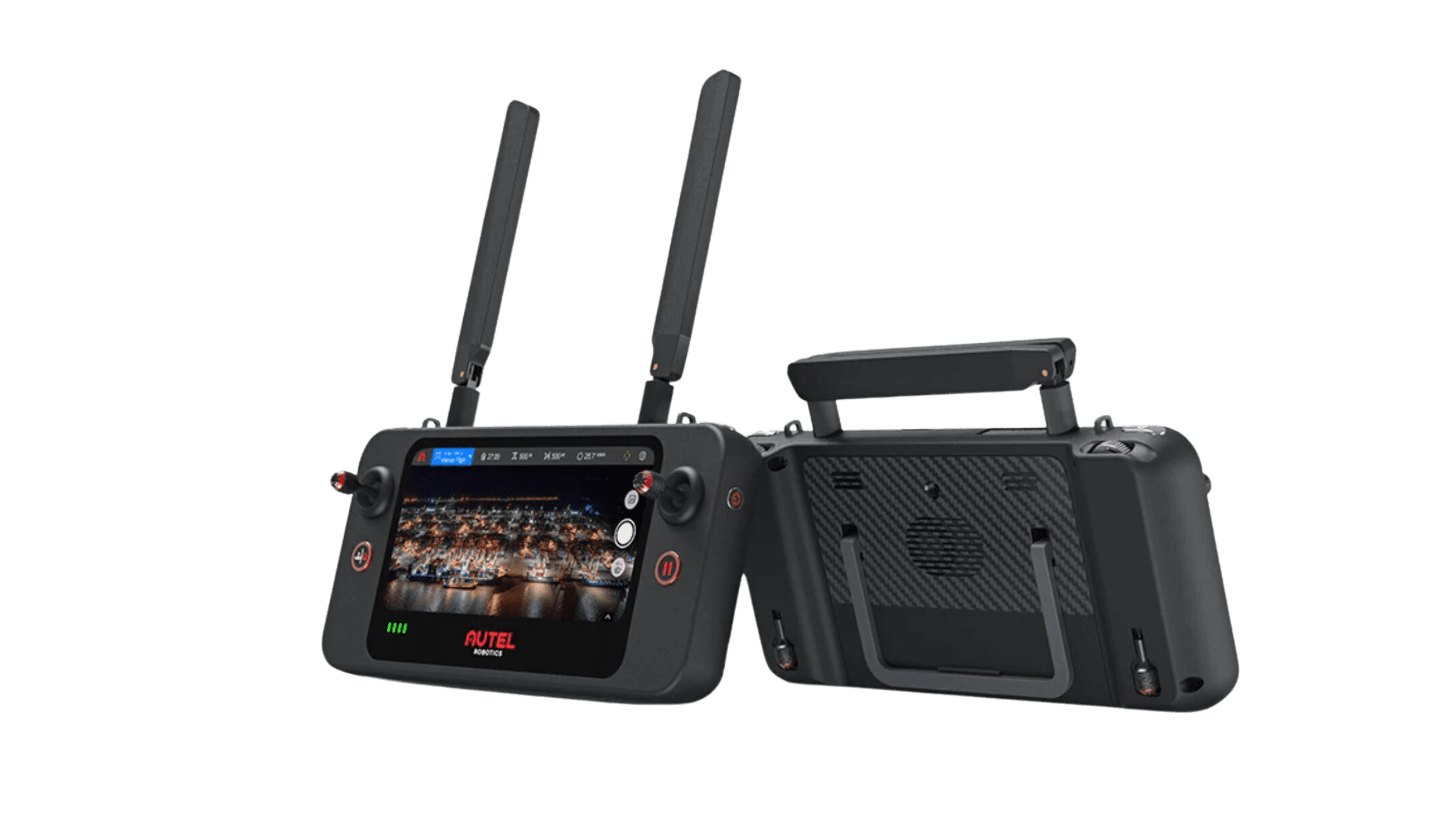
Featuring IP55 weather resistance and 5G connectivity, the Autel Evo 2 Pro also supports swappable attachments while supporting only a single payload at a time. These features make it an excellent choice for professionals seeking durability, versatility, and high-performance in a long-range drone solution.
Pros & Cons
Moving from the features and descriptions of the Autel Evo 2 Pro drone, a detailed look at the pros and cons will help potential buyers weigh its value proposition.
| Pros | Cons |
|---|---|
| Features 6K video capability for high-resolution footage. | Issues with gimbal vibration have been reported. |
| Equipped with a variable aperture lens, offering greater control over imaging. | Some users experience connectivity problems with the smartphone app. |
| Offers a maximum flight time of 40 minutes, ideal for extended missions. | Learning curve may be steep due to advanced features and large size. |
| Boasts a maximum transmission range of up to 9km/5.5 miles. | Larger drone size makes it less portable than some competitors. |
| Utilizes dual-band frequencies for a more resilient long-range connection. | Third-party accessories may be required to maximize range potential. |
This table captures a balanced perspective, revealing what makes the Autel Evo 2 Pro drone a considerable option alongside some of the challenges users may face.
DJI Air 3: Best for Lightweight and Compact Design
The DJI Air 3 is known for its lightweight and compact design, making it highly portable while still delivering exceptional performance. Its advanced features make it a top choice for those seeking convenience without sacrificing quality.

Features & Description
The DJI Air 3 boasts a lightweight and compact design, making it highly portable for on-the-go adventures. Equipped with the OcuSync 4.0 transmission system, this drone offers an impressive maximum flight distance of 32 km and up to 46 minutes of flight time, ensuring extensive coverage for aerial photography or videography.
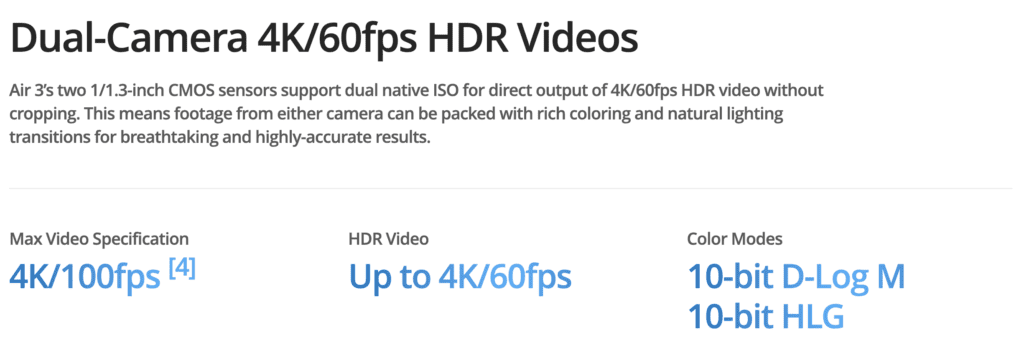
Its high-resolution camera captures stunning 4K HDR videos with precision and clarity, allowing users to elevate their creativity while exploring different perspectives. Alongside affordability, this long-range drone features obstacle avoidance sensors and intelligent flight modes, enhancing safety and maneuverability during flights.

With its advanced technology and user-friendly design, the DJI Air 3 stands out as an accessible yet feature-packed option for enthusiasts seeking remarkable transmission range combined with exceptional performance.
Pros & Cons
Understanding the benefits and limitations of the DJI Air 3 drone is essential for anyone considering this model for long-range aerial photography and videography. Here is a breakdown of its pros and cons:
| Pros of DJI Air 3 | Cons of DJI Air 3 |
|---|---|
| Impressive 15-kilometer range facilitates extended flight operations. | Stability concerns arise when flying in windy conditions. |
| Shoots high-quality 4K video with 10-bit color depth for cinematic footage. | Requires ND filters for optimal performance in bright daylight shoots. |
| Dual cameras equipped with 48-megapixel sensors deliver crisp, detailed images. | Vertical shooting at full resolution may be limited in certain scenarios. |
| Extended maximum flight time of 46 minutes supports longer missions. | While compact, the lightweight design can affect flight stability. |
| Omnidirectional sensors for obstacle avoidance enhance safety. | Compact folding design sometimes perceived as less robust. |
| Features like waypoints, active tracking, and cruise control enhance usability. | May require additional accessories for certain types of photography. |
This drone offers a blend of advanced features and performance characteristics, making it suitable for a variety of long-range applications. However, users must consider operational limitations, especially in challenging weather conditions and specific shooting requirements.
Autel Robotics EVO Lite+ Drone: Best for Advanced Photography
The Autel Robotics EVO Lite+ Drone is a top choice for advanced photography due to its high-quality camera and advanced shooting modes. With features like 8K resolution, adjustable aperture, and intelligent flight modes, this drone is perfect for capturing stunning aerial shots.
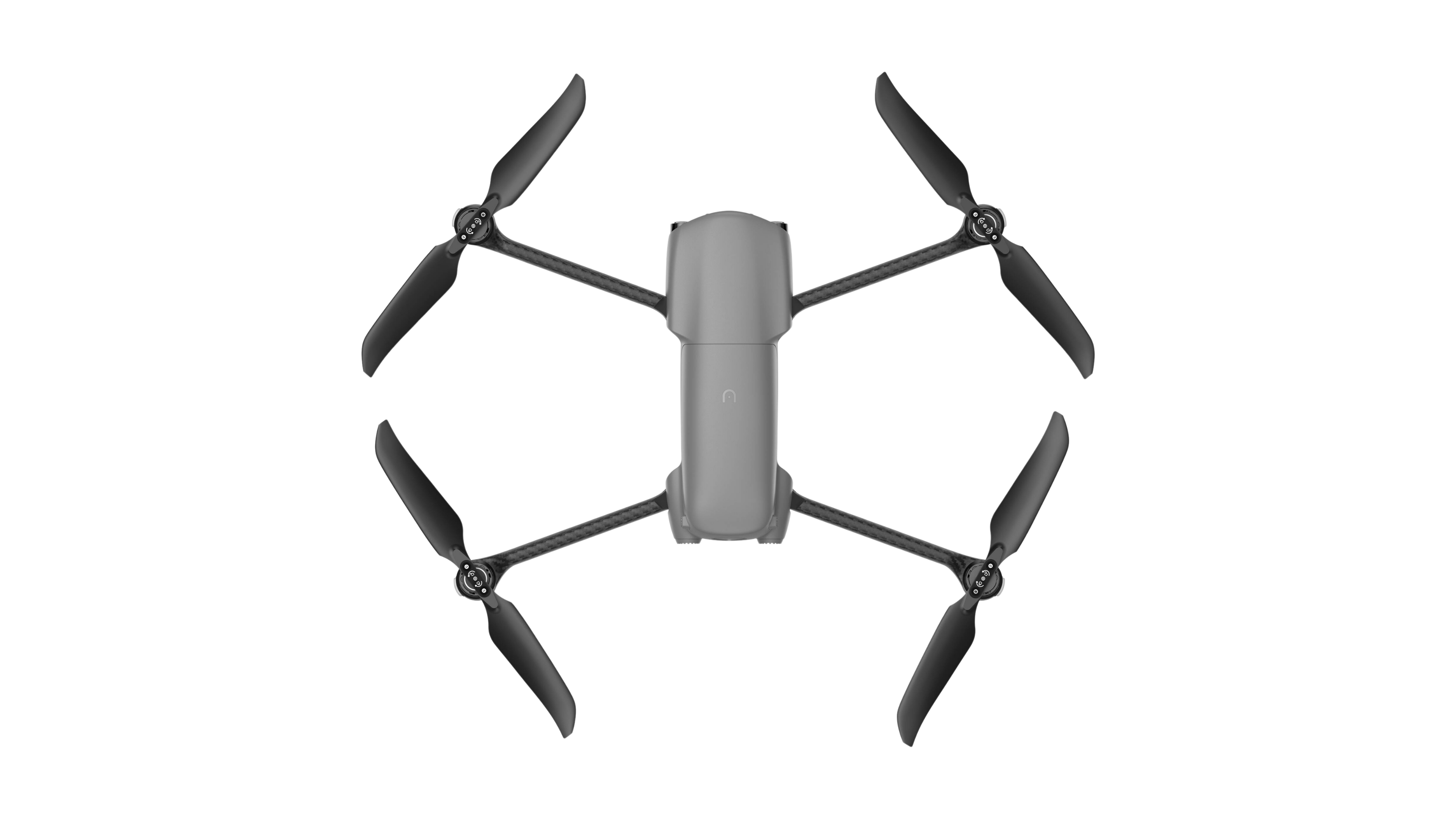
Features & Description
The Autel Robotics EVO Lite+ Drone offers a flight range of 11.9km and an impressive maximum flight time of 40 minutes, making it ideal for capturing breathtaking aerial footage. Equipped with a high-performance 6K video camera, this drone features a variable aperture ranging from f/2.8 to f/11, along with a 3X lossless zoom and a remarkable 1-inch 20-megapixel sensor for stunning image quality.

Additionally, the Night Mode feature is AI-assisted, ensuring automatically denoised and smooth footage even in low-light conditions. With manual control over images and being one of the quieter long-range drones available, the Autel Evo Lite+ Drone stands out as an excellent choice.
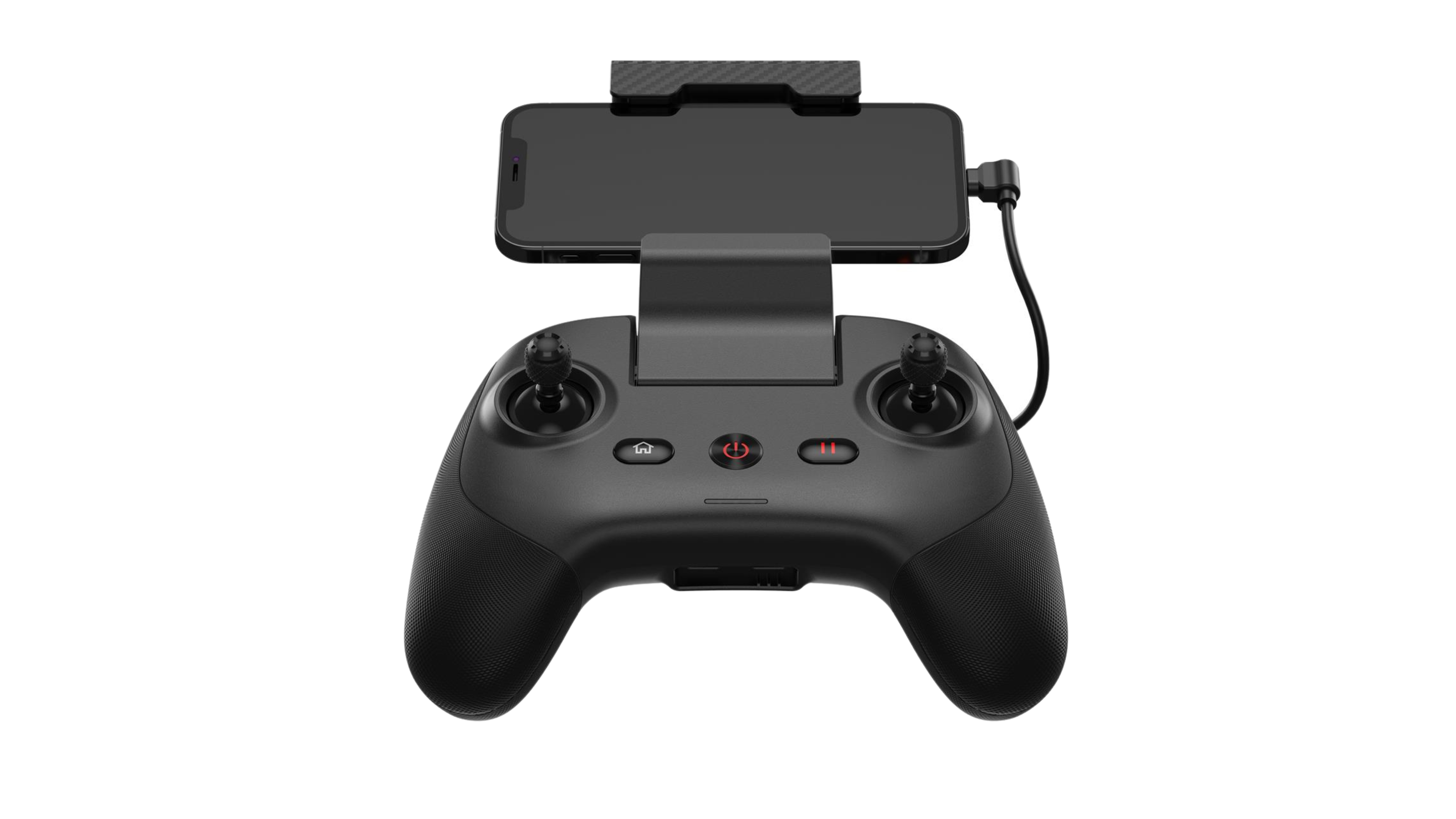
This advanced drone also allows for antenna upgrades and the use of directional antennas such as patch or helical antennas to extend its range further. Highly recommended for its exceptional flight time, superior 6K video capabilities, good flight range performance, and user-friendly operation – the Autel Robotics EVO Lite+ Drone is well-suited for professional photographers and videographers seeking top-tier aerial photography solutions that deliver outstanding results every time.
Pros & Cons
Moving from the detailed features of the Autel Robotics EVO Lite+ Drone, let’s evaluate its advantages and disadvantages to give potential buyers a clearer understanding of what to expect.
| Pros | Cons |
|---|---|
| Impressive flight time up to 40 minutes | Does not support a LOG profile for video |
| Equipped with a 6K video camera, variable aperture, and 3X lossless zoom | Legs are visible sticking out when drone is folded |
| Features Night Mode for excellent low-light performance | Legal limitations for operation vary, which may restrict use in certain areas |
| Ranked among the quietest long-range drones available | – |
With these insights, pilots can weigh the benefits against the drawbacks to decide if the Autel Robotics EVO Lite+ Drone aligns with their specific drone needs and legal requirements.
Fimi X8SE Drone: Best for Affordability
The Fimi X8SE Drone is a top choice for those looking for an affordable long-range drone option. It offers advanced features at a budget-friendly price, making it a great option for both beginners and experienced users.
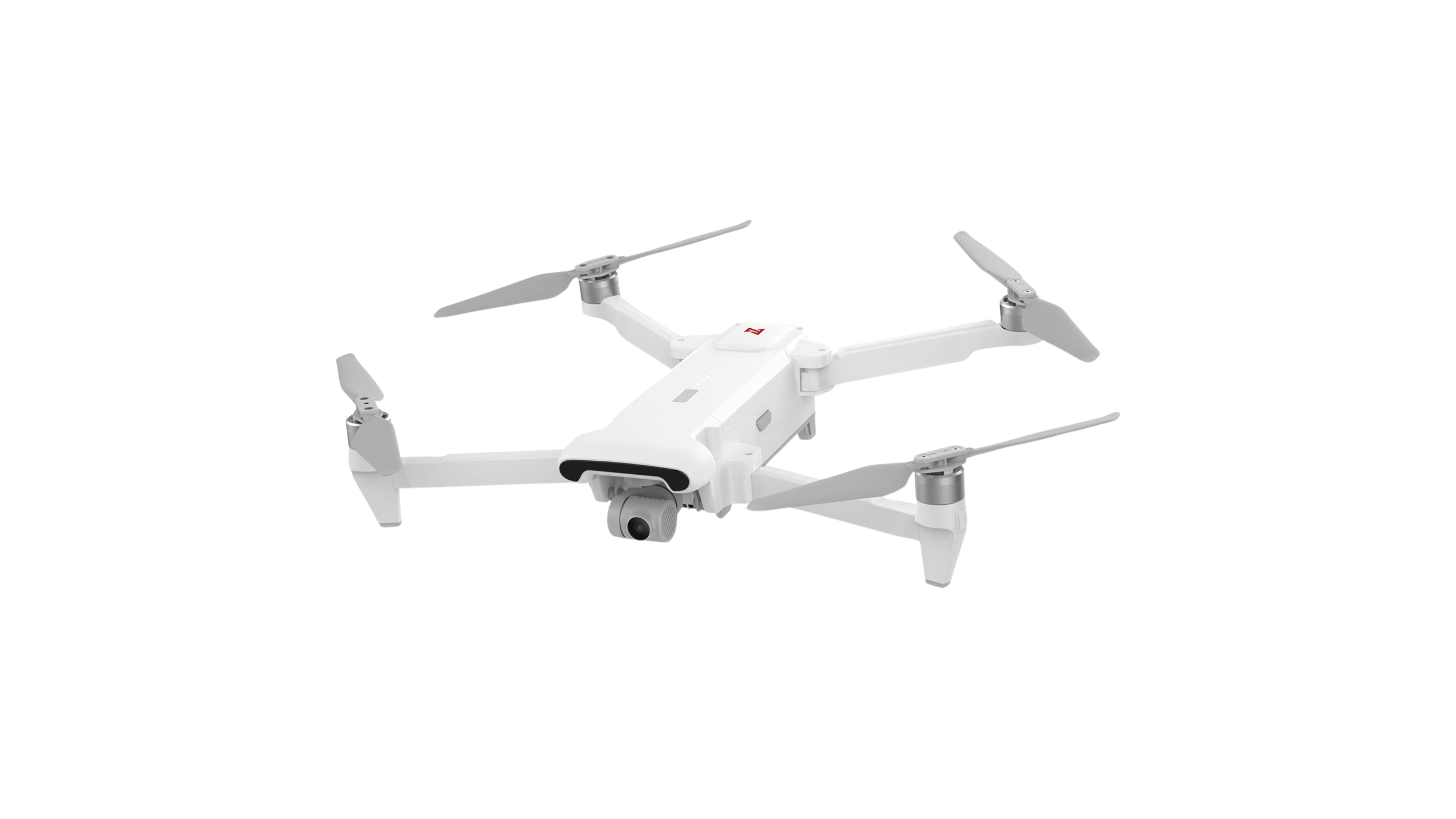
Features & Description
The Fimi X8SE drone boasts an impressive transmission range of over 6 miles, making it a reliable choice for long-range flights. Its foldable design ensures convenient portability, while the drone’s obstacle avoidance sensors contribute to safe and smooth flying experiences.

With a remarkable 50MP photo capability and the ability to capture stunning 4K/30fps video, this drone delivers high-quality imagery that meets professional standards. Additionally, it offers intelligent flight modes that enhance control and precision during flights, providing users with versatility and ease of use.
Equipped with features such as obstacle avoidance sensors and a superior transmission range of over 6 miles, the Fimi X8SE drone is designed to deliver exceptional performance in various aerial applications.
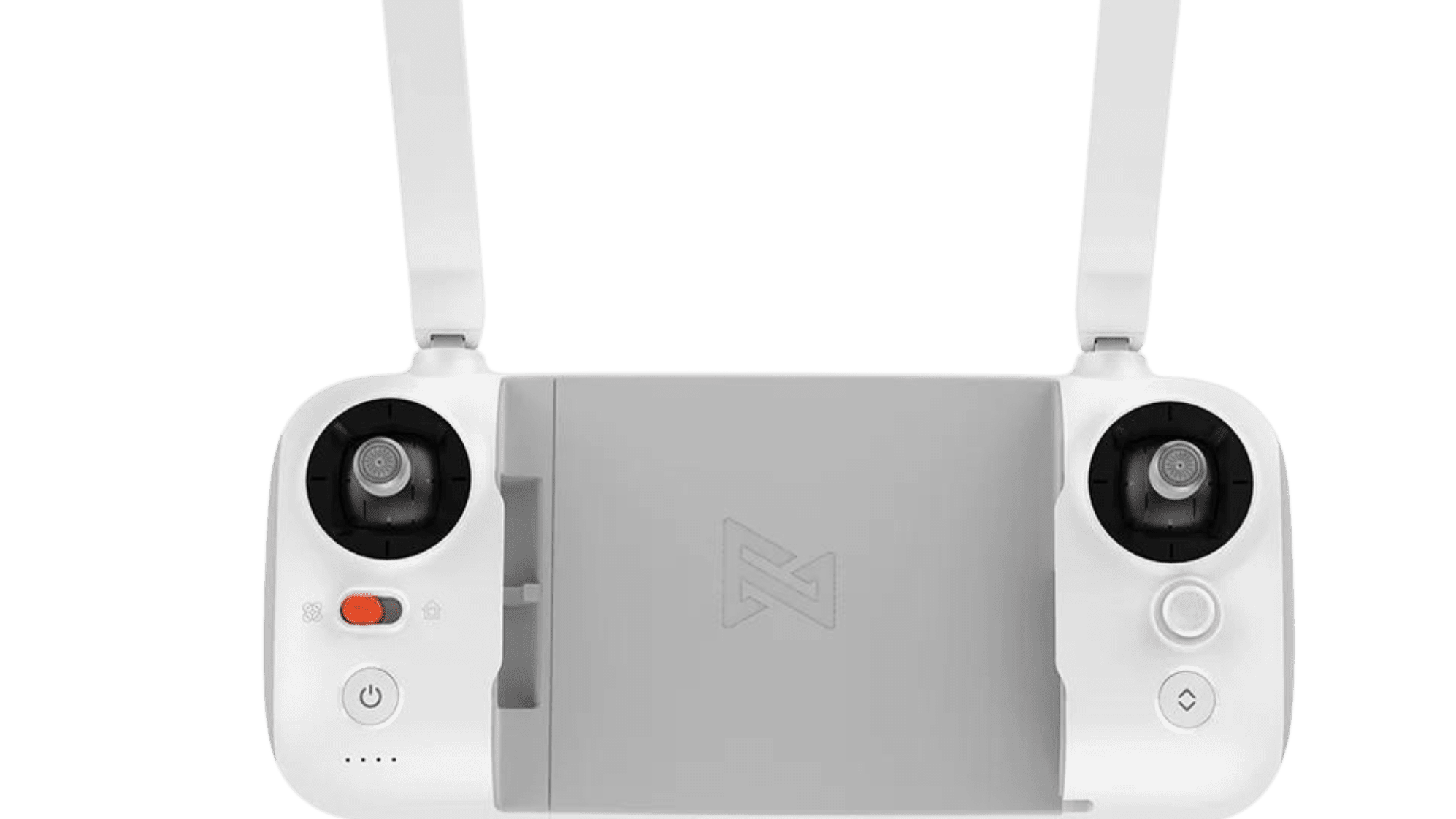
The impressive 50MP photo capability combined with its ability to capture outstanding 4K/30fps video makes it an ideal choice for photography enthusiasts or professionals seeking top-tier image quality from their drones.
Pros & Cons
Analyzing the Fimi X8SE Drone reveals several advantages and disadvantages for those seeking a long-range drone on a budget. Its performance and features present a mix of strong points and potential drawbacks.
| Pros | Cons |
|---|---|
| Affordability makes it accessible to more users | Lack of obstacle avoidance sensors may raise safety concerns |
| Impressive flight time of up to 35 minutes on a single charge | Footage resolution is lower than some competing long-range drones |
| Good range of 10km for extensive exploration | Lower performance in low-light conditions compared to higher-end models |
| Equipped with a half-inch 48-megapixel sensor for quality imagery | Video transmission might not be as strong as premium options |
| Camera boasts a bright f/1.6 aperture, suitable for various lighting conditions | Weather resistance is not on par with more expensive drones |
| ISO range from 100 to 6400 supports varied shooting environments | Some users may find advanced features lacking |
Extending the Range of a Drone
Extend the range of your drone by using a UAV relay communication system, enhancing hardware, and optimizing environmental conditions. Learn how to maximize the performance and capabilities of your long-range drone for extended flight distances.
Use of UAV Relay Communication System
To extend the range of a drone, one effective method is through the use of a UAV relay communication system. This technology involves utilizing an intermediary unmanned aerial vehicle (UAV) to act as a relay station, allowing for extended communication between the pilot and the primary drone.
By leveraging this system, the operator can maintain control and receive real-time data beyond typical operational limits, enhancing situational awareness and mission capability.
Implementing a UAV relay communication system effectively expands the range and operational capabilities of drones in various applications, from search and rescue missions to environmental monitoring.
The use of such systems can provide crucial connectivity in remote or challenging environments where traditional methods may be limited or unreliable. Leveraging UAV relay communication technology opens up new possibilities for long-range drone operations with increased reliability and efficiency.
Enhancing Hardware
To extend the range of a drone, enhancing hardware plays a crucial role. Upgrading the drone’s antenna can significantly increase its signal strength and range. Additionally, using signal boosters or amplifiers can further extend the drone’s communication capabilities, allowing it to cover greater distances while maintaining a strong connection.
Furthermore, optimizing the firmware and software within the drone’s hardware can also enhance its performance and efficiency in long-range flights.
Another aspect of enhancing hardware involves improving the power source of the drone. Upgrading to high-capacity batteries or utilizing advanced battery technologies can extend flight times and overall range.
Optimizing Environmental Conditions
To maximize the range and signal strength of your long-range drone, ensure to fly it in optimal environmental conditions. Avoid flying in extreme weather like heavy rain, snow, or strong winds as these can significantly affect the performance and stability of the drone.
Additionally, consider flying during clear weather with minimal electromagnetic interference from power lines or other electronic devices that could disrupt communication systems and weaken the signal strength.
When optimizing environmental conditions for your long-range drone flight, be mindful of temperature and humidity levels as they can impact battery performance. High temperatures can cause batteries to overheat and lose capacity faster, while cold temperatures can reduce overall battery life.
Drone Control for Long Range Drones
Drone control for long range drones includes remote control, computer interface, and ground control technologies. To learn more about how to effectively control your long range drone, keep reading!
Remote Control
Long range drones are typically controlled using a remote control, sometimes referred to as a transmitter. The remote control allows the operator to maneuver the drone while providing real-time feedback on its flight status and camera view.
Using radio technology or wireless networks, the controller communicates with the drone through frequency hopping spread spectrum (FHSS) or other communication systems, ensuring precise and responsive control over the drone’s movements.
For long-range flights, it’s essential to have a reliable and ergonomic remote control that offers extended connectivity. The use of ground control technologies and computer interfaces also plays a crucial role in managing long-range drones effectively from take-off to landing, ensuring seamless operations even at far distances.
Computer Interface
Transitioning from remote control to computer interface, these long-range drones offer advanced capabilities through their computer interface systems. The DJI Mavic 3 Pro and Autel Evo 2 Pro Drone are equipped with a computer interface for precise control over flight range and video transmission.
Additionally, the DJI Air 3 drone features a cutting-edge computer interface for enhanced video shooting and overall control. Moreover, the Autel Robotics Evo Lite+ Drone comes with an intuitive computer interface that allows users to regulate flight range and duration seamlessly.
These computers offer sophisticated functionalities that enable users to optimize the performance of their long-range drones in terms of navigation, communication, and extended range.
Ground Control Technologies
Long range drones are managed through ground control technologies, which include remote controls or computer interfaces. These technologies provide real-time monitoring and allow operators to adjust flight parameters during the mission.
Pilots use ground control stations to plan flight paths, monitor telemetry data, and ensure safe operation of the long-range drones. The integration of advanced communication systems such as cellular networks, satellite communication, and UAV relay technology further enhances the capabilities of ground control technologies in managing long range drones.
Pilots rely on ground control technologies to maintain a strong and stable connection between the drone and the operator. This is critical for ensuring reliable transmission of video feed as well as receiving flight data from the drone.
Understanding the Factors Affecting Drone’s Range and Signal Strength
Factors such as battery technology, aerodynamic design, communication systems, autonomy and flight control systems, and environmental conditions all play a crucial role in determining the range and signal strength of long-range drones.
Understanding these factors is essential for maximizing the capabilities of your drone during flights.
Battery Technology and Capacity
Improving battery technology is crucial for enhancing the flight time and performance of long-range drones. Advanced battery capacity allows for longer flights, extended ground coverage, and better photography capabilities.
DJI’s focus on advancing battery technology contributes to improved obstacle avoidance, enhanced positioning power, and better video transmission technology.
Enhancing the capacity of drone batteries is essential for extending flight duration and improving overall drone performance. Invest in the latest battery technologies to ensure longer flight times and maximize your drone’s potential for capturing stunning aerial imagery.
Aerodynamic Design for Efficiency
To maximize a drone’s range and efficiency, aerodynamic design plays a crucial role. Streamlined shapes and smooth surfaces reduce air resistance, allowing the drone to move through the air with minimal drag.
This results in improved energy efficiency and longer flight times, ultimately enhancing the drone’s range. Additionally, optimizing wing shape and propeller design can further contribute to reducing turbulence and increasing lift, enabling the drone to cover greater distances while conserving power.
In essence, focusing on aerodynamic design not only enhances a long-range drone’s endurance but also improves its overall performance.
Communication Systems
Communication systems are crucial for long-range drones, as they enable the transmission of data and control signals between the drone and its operator. The use of advanced radio signal technologies such as Bluetooth, Wi-Fi, and mobile networks allows for reliable communication over extended distances.
Additionally, the integration of high-gain antennas and amplification devices can significantly enhance the range and signal strength of a drone, ensuring stable communication even in challenging environments.
Drone operators can also employ UAV relay communication systems to extend their range further by using intermediate drones or ground-based stations to relay signals over longer distances.
Autonomy and Flight Control Systems
Autonomy and flight control systems are essential in determining the range and signal strength of a drone. These systems enable drones to navigate, make decisions, and maintain stability without constant human input.
Features such as GPS navigation, obstacle avoidance sensors, and intelligent modes like “follow me” or “waypoints” contribute to autonomous flight capabilities, allowing drones to fly longer distances safely.
Additionally, advanced flight control systems provide precision maneuvering and responsiveness during flights, optimizing their efficiency for extended ranges.
Weather Conditions and Environmental Factors
To ensure optimal drone performance, it’s crucial to consider the impact of weather conditions and environmental factors. Temperature, wind speed, and precipitation can affect battery life and flight stability.
Flying in ideal weather conditions with minimal gusts will help maximize flight time and reduce the risk of signal interference.
In addition, high humidity levels can impact electronic components and compromise video transmission quality. It’s essential to monitor local weather forecasts before flying your long-range drone to avoid potential environmental hazards that could endanger both the drone and its surroundings.
Conclusion
In conclusion, the diverse options in long-range drones offer varying features and capabilities. The range of a drone is not the sole consideration; factors such as camera performance, battery life, and intelligent functions also play a crucial role in choosing the best long-range drone.
To ensure regulatory compliance, it’s essential to be aware of legal limitations for flying long-range drones in different regions. By carefully considering these aspects, you can make an informed decision when selecting the best long-range drone that aligns with your specific needs and preferences.
FAQ – Long Range Drone
The DJI Mini 3 Pro is among the best long-range drones in 2025 due to its exceptional balance of weight, camera options, and transmission distance, offering a range of 10 km. This drone also features enhanced flight modes and robust signal range, making it ideal for long-range drone flight.
The DJI Air 2S stands out with a remarkable flight range of 12 km, making it one of the top long-range drones in the market. Its flight capabilities, coupled with advanced camera options, position it well compared to other drones, offering both long flights and high-quality aerial footage.
Yes, range extenders are available for many long-range drones, including the DJI models like the Mini 3 Pro and the Air 2S. These devices can significantly increase the signal range between the drone and the controller, enabling longer flight distances and more versatility in long-range drone use.
For professional use, the DJI Matrice series, specifically the DJI Matrice 350, is among the longest range drones, offering advanced flight capabilities and a range of payloads. With a significant transmission distance and durability for long flights, it’s designed for demanding tasks in the drone industry.
In 2025, long range drones like the DJI Mini 3 Pro and the DJI Air 2S offer impressive flight times, often exceeding 30 minutes in the air. This endurance allows for extended long-range aerial exploration and is a significant advancement compared to heavier drones with shorter flight times.
Camera options are crucial in long-range drones for providing high-quality imagery and video from afar. Drones like the DJI Mini 3 Pro and DJI Air 2S feature advanced camera systems that afford users creative control and flexibility, making them ideal for various long-range drone use, from photography to surveying.
Yes, long range drones such as the DJI Mini 3 Pro and the DJI Avata can be used with DJI Goggles for an immersive FPV (First Person View) experience. This setup enhances drone flying by providing a real-time perspective from the drone, making it perfect for exploration and racing.
While the best long-range drone offers a range of advanced features and flight capabilities, the price point is a significant consideration for many users. Drones like the DJI Mavic 3 Classic offer a balance between high-end features and cost, making them accessible to a wider range of users looking for a drone that combines long-range capabilities with affordability.

